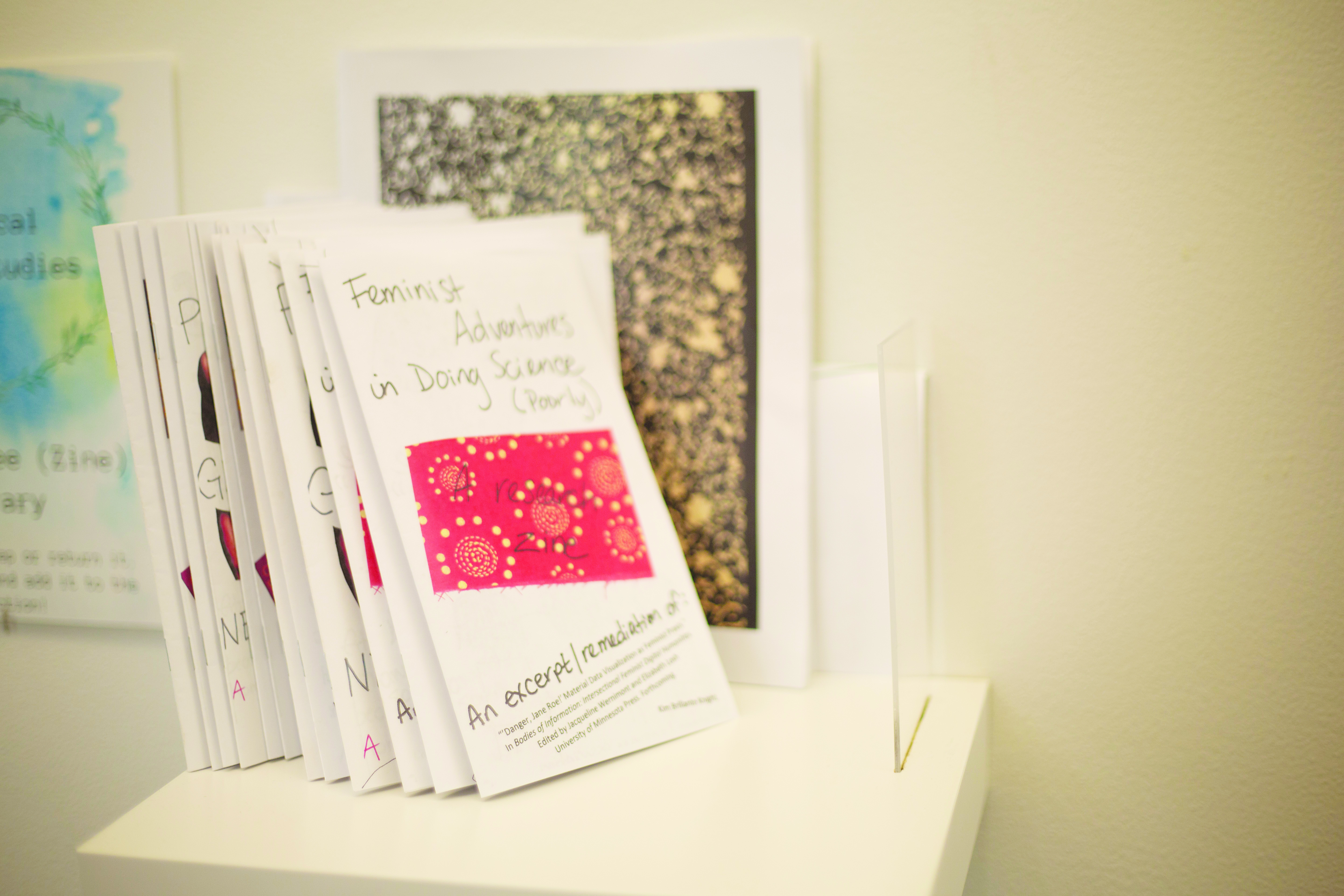In an effort to make research more accessible to the UTD community, a group of ATEC professors helped establish a small zine community bookshelf on the first floor of the ATEC building.
Kim Knight, the associate dean of graduate studies at UTD, spearheaded the community bookshelf, which was put up at the beginning of the semester and makes up part of a wall displaying the works of students in Critical Media Studies.
“(The bookshelf) is part of the Critical Media Studies showcase. In ATEC, we’re trying to decide how to best showcase both student and faculty work,” Knight said. “People have said that academic writing can be a little dry and inaccessible. What we are trying to do is make our research a little more accessible.”
A zine is a self-published work that is circulated throughout a community. It is made up of original or appropriated texts, images and drawings.
“They actually started in the early 20th century with science fiction fans developing zines and circulating the pamphlets. And, of course, when we got Xerox copiers, (zines) became much more accessible and have a really important place in punk and riot girl culture,” Knight said. “But they could be traced earlier back than that … (such as) early pamphleteering and other practices of self-publication.”
Currently there are several zines on display, all of which are written by faculty members. Contributors include ATEC assistant professors Hong-An Wu and Juan Llamas Rodriguez.
“Zines can be interpreted multiple ways, but I can only speak for the purpose of that zine that I made,” Wu said. “I’ve been researching and publishing in different kinds of avenues, traditionally in academic circles, and trying to convey it in a digestible and different way for the undergraduate students of ATEC.”
The bookshelf was put up so professors had a space in which they could put up a condensed version of their area of research, Wu said. Zines on the bookshelf include topics varying from failure, to the recent Feminist MakerSpace event and to game development.
“Traditionally we think of research as papers and published in journals that are not widely accessible and circulated in other kinds of communicative platforms,” Wu said. “The idea there is to have a platform that people could just take a zine which gets at all the really heavy and deep research ideas that we’re investigating.”
The bookshelf follows a “take one, leave one” rule. Rodriguez, an assistant professor in Critical Media Studies, contributed to the zine bookshelf as well.
“In the traditional sense, the little library has to do with books being donated and shared in a particular community,” Rodriguez said. “In ATEC, we’re trying to replicate that.”
Rodriguez said the original purpose of these historical libraries was to make ideas more accessible, a goal mirrored in the creation of ATEC’s bookshelf.
“It’s a community-oriented artistic practice and follows the advocacy that information should be free and accessible,” he said. “There’s no reason why people who don’t have the resources shouldn’t have the access to things like books.”

Leave a Reply